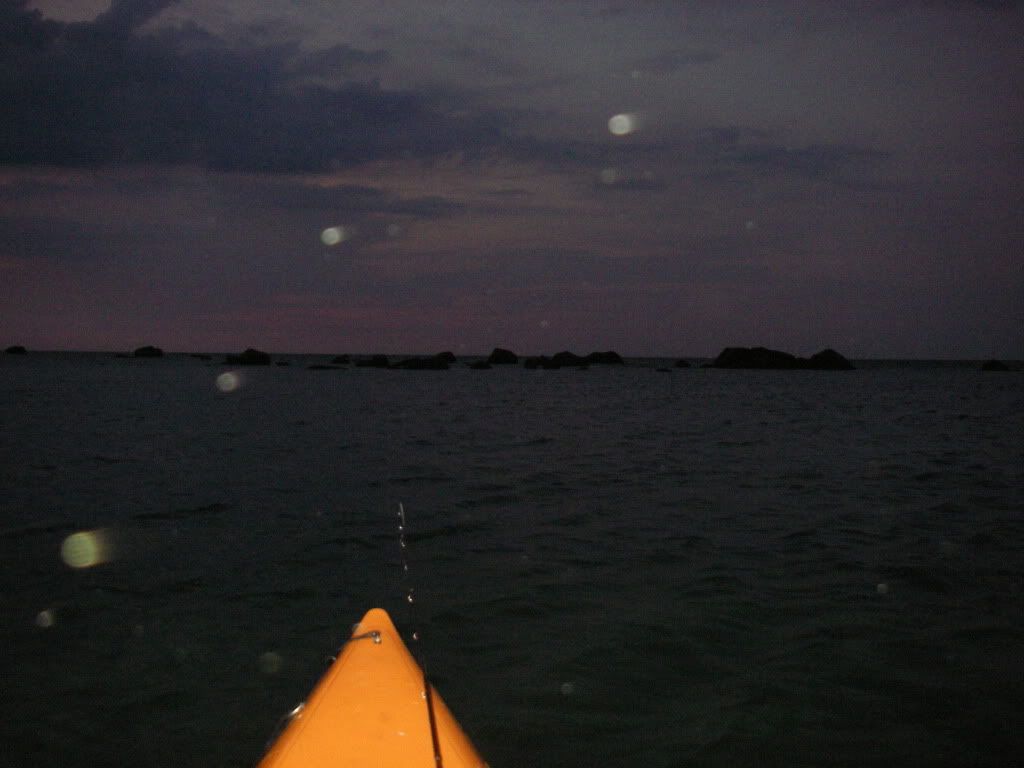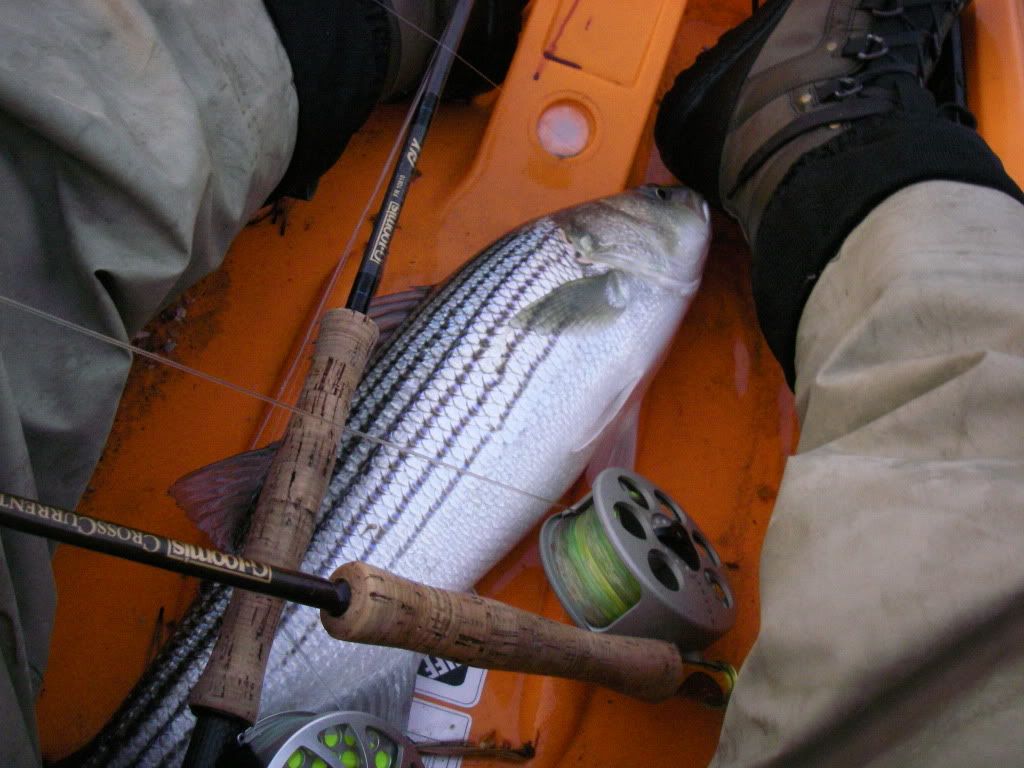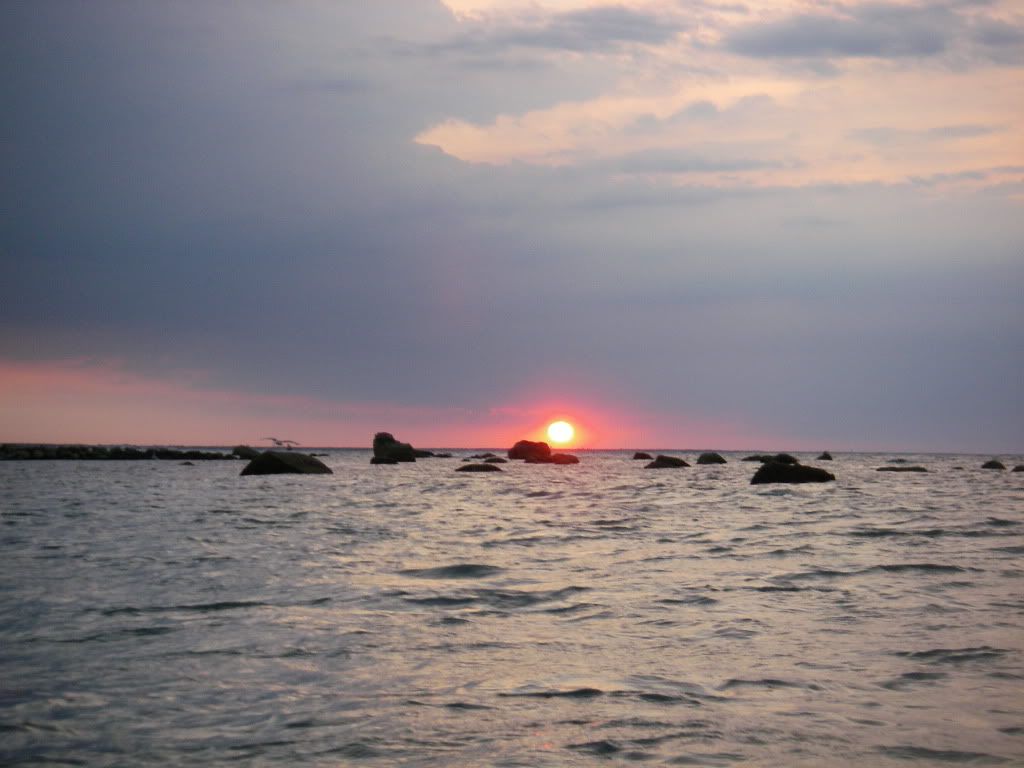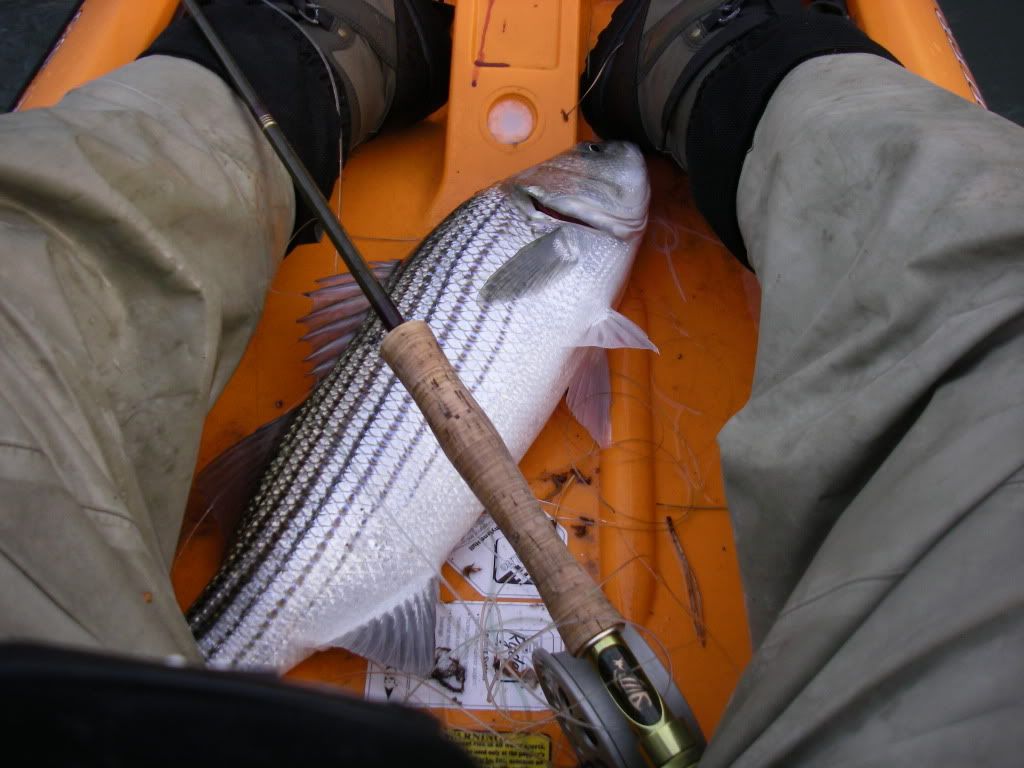The First Rule of Fishing

This may actually be something of a fishing report. We’ll see – at least I took some pictures. I have a measure of respect for guys who take a lot of pictures, and I certainly enjoy seeing them on-line especially from areas I haven’t or may never get to fish. I’ll try to be better about it. Unfortunately, the most exciting aspects of my fishery happen at night, and if you think I’m snapping a pic of a bluefish between my legs you are sadly mistaken.
The first picture is of the area I was fishing. It is pre-dawn and low tide. At high tide most of those rocks will be underwater which makes the area difficult for power boats to navigate – perfect for kayaks. People often ask me about sharks and crap, but the greatest threat to a kayaker is a moron in a motor boat.
I love my kayak. It never ceases to amaze me just how close you can get to the fish when you are in the saddle – closer than if you are wading. The quiet stealth makes the craft a perfect companion to fly fishing. You do have to be mindful of where you are going though, and it is easy, even for experienced yakkers to make a mistake. This trip I made a mistake.
“You never want to violate the first rule of fishing, which is ‘Make sure the fish doesn’t catch you.’”
The Honorable Michael J. McCarthy

Fishing this area is always tough. The best times to fish it is when the water is moving. Low tide does make paddling harder since the current feels stronger since everything is compressed. The difficulty comes from having to work the fly in moving current from a drifting yak. Keeping tough with the fly is a challenge, and sometimes you really have to work it to get a strike.
This fish in the picture is the one that almost got me. Not the greatest picture but this fish is what I consider a “good” fish. I don’t measure them but he’s in the 26-30″ ballpark which for stripers is when they really come into their own in a fight. My kayak is 80 pounds, I’m about 250, this fish had no problem pulling me through the boulders. An unfortunately timed wave lifted the yak just enough so instead of bouncing off a rock it became perched on top of it. I had to toss a leg under the yak, and do a clumsy half-squat to free myself. A few seconds later I had to take my other rod out of the holder before I lost the tip on another boulder, that’s why both rods are in the photo. This wasn’t my mistake – this is all part of the fun.

Maxims get to be maxims because they are largely true. When the sun finally came up it was a brilliant red.
“Red Sky at night, a Sailor’s Delight
Red Sky at morning, a sailor’s warning.”
This area is a good three mile paddle back to the launch. The sunrise stirred the wind something fierce. Worse, the wind was against the tide which beat the seas into 2-4′ swells. The real problem with waves for a yakker is that when they lift you up your paddle blade is out of the water, which interrupts your stroke. When the 20-25 winds are in your face and you have to time your strokes to the waves, makes for a long paddle. Threatening clouds and fog are concerns as well, but so long as I can see my compass needle I’m happy.

A long paddle which gets longer when you stop to make a few last casts. If this fish looks like the other one (and a dozen or so others) there is a reason. Stripers tend to school together with other fish their same size. The reason I mention this is to point out something that I have learned. If you want to catch bigger fish and you are currently catching smaller ones, you must stop what you are doing and either change your location or significantly change how you are fishing. The other old maxim “never leave fish to find fish” may be true to a point, but with stripers if you are catching 20″ fish and you want to catch 30″ fish you have to bite the bullet and leave the fish you don’t want. For many striper fly fishermen this is too difficult and you will hear guys talk about catching high numbers of fish, but complain about their lack of size.
Big fish are different than small fish, even on the rare occassions that they are in the same area they will relate to the structure differently.
So thats my report, all told better than a dozen fish for a morning tide all caught on snake flies. Black and purple before the sun rose, all white afterwards.









